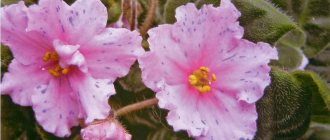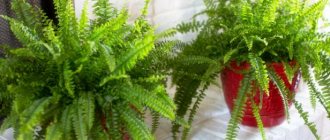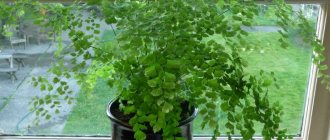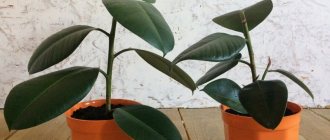- July 27, 2019
- Houseplants
- Ekaterina Komisarova
In apartments and offices you can often see small trees, the branches of which are covered with white fluffy leaves that exude a unique aroma. They are called "myrtle". These plants began to be grown in ancient times, but they have not lost their relevance today. This is due to its high decorative characteristics, unpretentiousness and ease of maintenance. In addition, the trees are great for creating bonsai-style compositions. Let's figure out how to grow myrtle at home and learn about all the key features of its content. Once you plant it in your home, you will understand why it is so popular.
general information
According to legends, myrtle (care at home does not take much time) grows in the Garden of Eden. Adam managed to take the twig with him when God cast him out for disobedience. He planted it in the Mediterranean, where, due to the favorable climate, the tree took root. There are also references to this culture in Greek mythology. The wreath of the goddess of beauty Aphrodite was made of myrtle. Therefore, it is a symbol of love and devotion. Nowadays, in some countries, the bride's bouquet necessarily contains a sprig of a fragrant plant.
In the wild, the greatest concentration of myrtle is observed in subtropical climates, which are characterized by warmth and high humidity. It is represented by shrubs and low trees, the maximum height of which is three meters. They can be found in South America, Asia and Africa.
The myrtle houseplant (growing and caring for it will not cause difficulties even for beginners) is widespread throughout the world. Its branches are covered with small, pointed leaves that are bright green in color. During the flowering period, white or pink buds appear, which grow singly or in groups. The shape and number of petals may vary. It all depends on the specific variety, of which there are quite a few today. After the flowering period ends, small berries appear in place of the buds. The leaves contain essential oils that not only emit a pleasant aroma, but also have beneficial health properties. They also purify the air, which improves a person’s overall well-being and reduces the risk of developing colds.
Types of myrtle with photos and names
Common myrtle
In home floriculture, the most commonly grown myrtle (Myrtus communis) has a short branched trunk covered with exfoliating scales of red-brown bark. The leaves are green, oval-lanceolate, glossy, leathery, with a pleasant aroma. The flowers are white or pale pink with prominent stamens, the fruits are red-black berries. Blooms from June to August. Popular cultivars: “Tarentina” - a compact bush with berries that are smaller than those of the original form, but there are significantly more of them than those of the common myrtle; The variegated variety has a creamy-white pattern on green leaves.
Myrtle lush
Also interesting is the lush myrtle (Myrtus apiculata) - a bush or tree with peeling brown bark, under which the trunk is creamy white. The leaves are dark green, elliptical, matte. White single flowers bloom in July-August, black-red fruits are edible.
Myrtle hequen
Tree with shiny green leaves with wrinkled edges. This species is the most resilient of the myrtles.
Kinds
All over the world people grow indoor myrtle. It is a dwarf tree no more than sixty centimeters high. Thanks to its compact size, it does not take up much space in the apartment and fits among flowers without any problems. As for varieties, there are not very many of them. There are even fewer indoor plants on sale due to poor supplies. Therefore, to find a suitable look for yourself, you will have to make a lot of effort.
If you decide to start breeding these trees, then the best option is to do it by cuttings. There are a large number of species that are grown at home, but the following are the most popular among gardeners:
- Hamedafne - also known as bog myrtle. Care at home is very simple, no matter where the tree grows - indoors or outdoors. This is due to the fact that it is a frost-resistant variety, so it can withstand low temperatures well. The life cycle is five years. The juice contains a potent toxin that can be fatal to pets.
- Tarentina is a dwarf form of the common myrtle. Its advantage is long and abundant flowering. When grown in open ground, it grows and develops quickly. The slightly elongated oval leaves can reach a length of 1.5 centimeters.
- Variegant is perhaps one of the most common species. Many gardeners choose it for its high decorative value. The leaves are white, with a purple tint. They have a very bright, rich aroma, and also reduce the concentration of carbon dioxide in the room and purify the air.
- Hymenea is another popular species. People call it “the bride’s happiness.” In the natural environment they are represented by shrubs up to 5 meters high, but at home they do not grow above one meter. During the flowering period, branches are cut from it and used to decorate wedding bouquets.
It is interesting that the varieties listed above are a variety of common myrtle. Therefore, they have common characteristics and require a similar approach to care and breeding.
Indoor varieties
Of all the existing species, common myrtle is mainly used in pot culture. It is compact, quite fast growing, and highly decorative. Based on the species, breeders have developed several hybrid varieties. Of greatest interest are five varieties of common myrtle.
- Boetica. Compared to other varieties, it has larger and wider leaves. Easily formed, forms a lush crown. Often used to create bonsai-style compositions.
- Pumila. Compact variety with small, glossy, dark green leaves.
- Glanleam Gold. A variegated variety with unusual leaf color. The main color is dark green. There is a golden border along the edge of the leaf.
- Microphylla. Compact variety. The height does not exceed 60 cm. Young leaves are light, becoming darker with age.
- Latifolia. The hybrid variety is distinguished by rounded leaves, unusual for myrtle. The bush grows quickly and easily takes on any shape.
Myrtle branches are considered a symbol of Peace, harmony, and pleasure. In ancient times, the plant was an obligatory component of the bride's wedding wreath.
Indoor myrtle is valued not only for its decorative properties. Fragrant leaves and flowers release large amounts of phytoncides into the air. The substances purify the air, have antimicrobial and antibacterial effects, and help normalize the emotional background.
Content Features
The historical homeland of myrtle (care at home involves the creation of a certain microclimate, so it is classified as a heat-loving plant) is Africa. The optimal temperature is from 22 to 24 degrees. During the hot period, it is best to keep trees in shaded areas, since due to prolonged exposure to direct sunlight there is a high risk of getting burned. It is recommended to ventilate the room frequently to provide the plant with sufficient fresh air. But you should not leave it in drafts, as this can lead to the development of certain diseases.
In winter, myrtles feel better at cool temperatures, but it should not be below 10 degrees. If you live in a city apartment and it is not possible to create a suitable microclimate, then you should develop a watering and spraying schedule. During the cold season, plants do not require much moisture. One watering per week will be more than enough. When growing trees in a private house for the winter, you can take them to the basement or cellar. In this case, wintering will go well and the flowering period will begin very early. In the summer, myrtle is watered more often. But it is very important not to overdo it too much, since excess moisture can lead to rotting of the root system.
Forming a bonsai from myrtle
Miniature myrtle is quite easy to form. It suits many styles perfectly:
- formal vertical informal vertical;
- cascade and semi-cascade;
- rock root and group plantings.
The formation of myrtle bonsai is best done during the growing season. Start pruning your bonsai at the end of the summer season. This will promote bud development next year.
Sharp pruning of the top of the tree will help make the trunk thicker. Thus, you yourself choose the shape and style of the tree.
Pruning the trunk greatly affects the flowering of buds. For the most part, they respond well to pruning, but do it during the fall season because it can encourage buds for the following year. You can sacrifice flowers to form a crown, but only temporarily.
To change the direction of branching, use a wire:
- Press down the branch with thread or wire as much as necessary;
- Tie, starting from the trunk and ending with the required branch, with wire and bend it. If the branch is not fixed in the shape we need, use a tighter wire.
Myrtle wood is an excellent material for beginner bonsai creators. This plant tolerates pruning and pinching well and can grow on southern, western and eastern windows of city apartments. However, you can get a properly formed, healthy and beautiful tree only with proper care.
Top dressing
Myrtles are unpretentious plants, but when growing them, you must follow some basic rules. It is very important to provide the trees with sufficient light and moisture. Also, great attention should be paid to feeding. Myrtles begin to bloom very early, so the first fertilizers are applied to the soil in early spring. Complex mineral compositions are best suited for this. But when choosing fertilizers, it is also important to consider the specific goals you want to achieve. If you want to get a lush crown, it is recommended to use fertilizers rich in nitrogen. For abundant flowering, plants are fed with phosphorus mixtures, which are used once a week throughout the summer. In winter, myrtles hibernate, so you need to feed them no more than once every month and a half.
Haircut and pinching
The myrtle tree can be shaped to give it an original shape. But it’s better not to expose the trunk too much; it’s not too strong. Therefore, leave as many side shoots as possible. But if the goal of cultivation is flowering, then you should not get carried away with pinching, otherwise flower buds will not form.
However, it is still better to carry out the shaping. To do this, decide on the desired type of tree. You can form a very squat, thick cushion, or, on the contrary, you can make an airy, lightened crown on a trunk. The desired appearance can be achieved very quickly, in just a couple of years.
But remember that any pruned specimens need to be fed. Various fertilizers for indoor plants without chlorine are suitable for feeding.
Bloom
The optimal place for growing indoor myrtle is a windowsill facing the south side of the house. This is due to the fact that trees and shrubs of this genus require a lot of light for lush and long-lasting flowering. If this condition is met, but flowers do not appear for a long period of time, then the problem may be as follows:
- too sudden change in daylight hours;
- untimely watering and moistening;
- lack of fresh air;
- recent rejuvenation;
- insufficient amount of nutrients;
- various diseases and harmful insects.
To solve a problem, you must first understand what it is. First of all, it is important to provide proper care for myrtle plants. At home, plants need a special microclimate. If you often do not have the opportunity to water and spray the branches with a spray bottle, then it is worth buying an air humidifier. Also in winter it is necessary to create a source of artificial lighting.
Planting and transplanting
This is another important aspect when growing indoor plants that often goes overlooked. Transplant required:
- after purchasing a seedling;
- for young plants - once a year;
- for mature trees - every three to four years.
After you bring myrtle home, it needs to be planted in a new substrate. In this case, it is very important to visually inspect the rhizome and trim off damaged shoots, if any. But you should be very careful not to harm the plant. When transplanting, it is recommended to adhere to the following tips:
- Before digging up a tree, you do not need to water it for several days. This will make it much easier to dig it up without damaging the roots. Simply grab the stem near the base, turn the pot over, and pull lightly.
- Before planting, the rhizome is treated with Kornevin so that the plant quickly adapts to a new place and acclimatizes.
- The myrtle pot should be twice as large as the root system. A drainage system is constructed at the bottom to remove excess moisture. For this you can use expanded clay. It is sprinkled on top with a small layer of soil substrate. You can buy it at any gardening store or make it yourself.
- The tree is carefully lowered into the pot, sprinkled to the edges with soil and lightly compacted. An important nuance: the neck of the plant must not be sprinkled.
- At the final stage, the plant is watered abundantly and placed in a dark place.
To prepare soil for myrtle you will need the following components:
- peat - 30%;
- turf soil - 30%;
- humus - 20%;
- river sand - 20%.
Before planting, it is advisable to pre-treat the soil with special chemicals against pests.
Dimensions of a pot for replanting myrtle
How you choose the right pot for planting a cutting depends on its health, growth rate and appearance. Many people tend to take pots with a large supply, but if the pot is large, after watering the soil will dry out for a very long time, as a result, a salt effusion will form on the surface - a whitish or red coating of calcium and magnesium salts. In this case, the acidity of the soil shifts to the alkaline side; in such an environment, some nutrients are poorly absorbed and there is a high probability of root rotting. In a pot that is too small, especially when planted in clean peat, on the contrary, the root system of the plant can become very dry.
Here is an example of planting a rooted branch (stem thickness initially 2 mm), which has long grown and reached a height of 75 cm from the ground.
Myrtle grew in a glass (200 g) for about two years. The thickness of the trunk at the root collar reached 6 mm. The earthen lump is almost completely taken over by the roots. If the roots of your cutting have grown only in the lower part, formed a “beard”, or crawled out of the drainage holes, and the upper part of the pot has not been developed by roots, when replanting it makes sense to cut off those roots that stick out from the holes of the pot, or those that have curled on the bottom in a spiral, displacing all the soil. After this, you need to transplant the young myrtle back into the old pot. It can be replanted into a new one only when the roots fill the entire space of the pot.
Crown formation
This can be done in two ways - pinching and rejuvenation. The first procedure can be performed at any time, regardless of the season of the year. It will make the crown more lush and decorative, but will lead to a decrease in the number of inflorescences. Pruning myrtle at home will also give the tree the desired shape and will also have a positive effect on the growth of new shoots. If you don’t take any measures at all, the crown will overgrow over time and become like a pyramid. The situation can be corrected by cutting off the top, but in this case the tree will turn into a shrub. Young plants do not need rejuvenation. They must first take root well and get stronger.
The most optimal time for the formation of the myrtle crown is spring. The shoots are cut to a third of their total length. But you must take into account that after pruning the tree will not bloom for a year. You can also rejuvenate in early or mid-autumn, before the first frost.
Caring for myrtle at home
As mentioned above, among flower growers, myrtle is considered a difficult plant to grow. It is necessary to pay attention not only to watering, lighting and fertilizing, but also to organize a rest period in the cold months. In addition, for a beautiful appearance, the tree must be pruned from time to time to form a crown. Let's learn more about caring for myrtle.
Temperature and lighting
The optimal temperature for indoor myrtle varies depending on the season. In spring, summer and early autumn, the thermometer should be between 17-22°C. In the warm season, the tree can be taken out to the balcony or garden plot: fresh air will be beneficial for the plant.
In winter, during the dormant period, when the plant rests, the temperature range is 7-10°C. The room for growing myrtle in winter can be a glazed loggia of an apartment or a veranda of a private house. And the maximum lower temperature that a southern guest can withstand is 5-10°C.
[!] A warm winter in an apartment, as a rule, has a negative effect on the plant - the myrtle sheds its leaves.
There should be enough lighting all year round, both in winter and summer, since myrtle’s homeland is sunny subtropics. That is why the best place to place the plant will be the southeast or southwest side of the room. You can also grow myrtle on southern windowsills. But in this case it needs to be shaded a little, otherwise burns may appear on the delicate leaves. The north of the room is the worst place for growing myrtle: there will not be enough sun, the growth and development of the green pet may stop.
Watering and air humidity
The peculiarity of the myrtle strait is that there should be an excess of moisture, but its stagnation in the bowl is excluded. Simply put, you should water abundantly and often, and excess water formed in the pan should be drained.
The frequency of watering depends on the season. In spring and summer, during the warm season, the plant should be watered as the top layer of soil dries one centimeter. On average, depending on location, four to five times a week. In winter, the frequency of watering should be reduced - once or twice a week will be enough. At any time, water for irrigation must be filtered or settled. Calcium and magnesium salts dissolved in tap water will settle on the plant in the form of a white chalky coating.
[!] If you forgot to water the tree and the myrtle began to dry out, you can try to revive it. Immerse the entire container with the plant in a bucket filled with water and leave for 15-20 minutes. Then let the excess liquid drain and then water according to your regular schedule.
High air humidity is an important parameter for growing myrtle; dry air in apartments has a bad effect on the plant. There are several ways to increase air humidity:
- spraying from a fine spray bottle,
- placing the plant on a tray filled with wet expanded clay or pebbles,
- using an electric humidifier.
Transplantation, soil and fertilizing
Myrtle is a plant that does not require frequent replanting. True, this only applies to adult specimens. On average, young trees are replanted once a year, older plants - once every two to four years. The best time for replanting is the end of winter, before the beginning of the growing season.
The soil for planting myrtle should be water- and breathable, nutritious and slightly acidic (pH 5.5-6.5). From store-bought options, soil for citrus fruits is a good choice. You can prepare your own soil mixture from equal parts of turf, leaf, peat soil, humus and sand. A small addition of coco soil or vermiculite will make the substrate looser, which will have a positive effect on the health of the roots.
Don't forget about drainage. A sufficient drainage layer (at least a quarter of the planting container) will ensure proper circulation of water and air.
[!] When transplanting myrtle, do not bury the root collar, this leads to rotting of the trunk.
The tree of life, of course, needs fertilizers, but there is no point in applying them all year round - the myrtle rests in autumn and winter, and there is no need to feed it. But, starting from March, fertilizers can and should be used. Which ones specifically depends on the condition of the plant. If myrtle is grown as an ornamental deciduous specimen, fertilizers with a high nitrogen content, which are called “For ornamental deciduous houseplants,” are suitable. In the case when buds appear, the fertilizer must be changed to those in which phosphorus and potassium predominate (“For beautifully flowering ones”).
The frequency of use of fertilizing is once every two weeks in the proportion recommended by the manufacturer.
Pruning and shaping myrtle
Myrtle is a plant that responds well to pruning. Moreover, it can be formed into a wide variety of shapes - a tree, a shrub, a bonsai. And some experienced gardeners have gone even further and grow myrtle with twisted or tied trunks, in the form of a cone, a ball, with two crowns. An inexhaustible field for imagination and experimentation!
In order to get a tree with one trunk, you need to select the main, most developed cutting, and remove the remaining shoots growing from below. From the upper branches you can form a crown of the desired shape.
In order to get a rounded shrub, there is no need to trim the lower branches, but pinch the upper ones from time to time to achieve the desired shape.
[!] Only adult specimens can be formed. Young, immature plants will develop poorly after such a procedure and will slow down their growth.
It often happens that the trunk of a myrtle tree is bent. This flaw can be corrected:
- Spiral-wrap thick copper wire around the barrel.
- Give the trunk the desired shape by bending it along with the wire. Do this as carefully as possible.
- In this form (with wire), myrtle should grow for several more months (2 months for young plants, 6 months for older specimens).
- Then the wire can be unwound or cut with side cutters in several places and then removed.
Bloom
Myrtle does not often bloom at home, but when it does, the plant looks simply magnificent - the bright green crown is densely strewn with white fluffy flowers.
Even experienced flower growers often cannot achieve the formation of buds, let alone amateur beginners. There are several secrets to flowering myrtle at home:
- It is necessary to organize a full rest period with low temperatures and poor watering.
- Good lighting is the key to myrtle flowering; without the sun, buds will not appear.
- Fresh air won't hurt either. It has been noticed that myrtles growing outdoors in summer bloom much more often.
- The size of the container in which myrtle grows is also important. The pot must be cramped, otherwise the plant will grow roots and green mass to the detriment of flowering.
- If you want to see buds, approach the myrtle pruning process with caution. The fact is that flowers do not appear on shortened shoots. In order for the myrtle to bloom, it is necessary either to stop pruning altogether, or to carry out the last pruning at the end of winter.
- A humorous recommendation based on folk superstitions - you need to put an ax next to the myrtle that refuses to bloom. )))
If you've done everything right and still don't see any flowers, you may just need to wait a little. Do not forget that the flowering period for myrtle is from early June to mid-August.
[!] If a flowering myrtle is pollinated (with a brush or a cotton swab), beautiful blue-black berries will appear that can be eaten.
Reproduction
When grown indoors, myrtle propagates in two ways: seeds and cuttings.
Propagating myrtle by seeds is a labor-intensive method, most likely suitable for professional breeders. Growing the tree of life from a cutting is much easier, and the result will be more predictable.
Let's look at the process step by step:
- For rooting, not too young, but not too old, semi-lignified cuttings 7-12 cm long are cut.
- The lower leaves are removed, and the cut site is sprinkled with any root formation stimulator (“Kornevin”, “Heteroauxin”)
- Then the prepared cuttings are planted in a damp peat-sand mixture, peat tablet or pure vermiculite.
- The container with the planted shoot is covered with a bag or plastic bottle to create a greenhouse effect and placed on a bright windowsill. In winter, when the daylight hours are short, you can organize additional lighting for the greenhouse.
- From time to time the substrate needs to be watered and the bag removed to allow ventilation.
- In about a month, the first roots should appear, and when four or five new leaves grow on the young myrtle, it can be replanted in standard soil.
You can propagate myrtle by cuttings at any time of the year, but the best time for this procedure will be the end of winter - the beginning of spring.
Diseases, pests and growing problems
Despite the fact that myrtle does not cause much trouble for its owner, due to improper care the tree may become sick or be attacked by insects.
The pests most often found on Adam's tree are spider mites, scale insects, and mealybugs. At the initial stage of infection, the fight against them consists of washing the crown and trunk of the plant and mechanically removing insects. If this does not help, you need to use modern insecticides in the dose recommended by the manufacturer.
As for diseases, myrtle itself will tell you what mistakes the grower made:
Myrtle leaves dry out or curl. Most likely the problem is a lack of moisture. The frequency of watering and spraying the plant should be increased.
The leaves fall, the tips of the shoots turn black. This alarming phenomenon is observed in two cases: a warm wintering of the plant in an apartment or rotting of the roots. If the first option is excluded, you need to check the roots for rot. Rotten areas must be removed, the cuts must be sprinkled with crushed coal and the plant must be replanted in a fresh substrate.
Branches stretch out, leaves turn pale with a lack of sunlight. It is worth moving the bowl to a more illuminated place.
Always inspect your myrtle carefully and, at the first sign of pests or disease, take the necessary measures immediately. And the wonderful tree, in turn, will thank you for your attention with lush foliage and magnificent flowering.
***
Legend of myrtle
One of the ancient Greek nymphs named Mersina was unusually beautiful and talented. Once, at a sports competition, Mersina defeated Aphrodite herself, the goddess of love. Aphrodite was so upset by the defeat that she ordered the girl to be killed, and after the order was carried out, she was horrified by what she had done. In repentance, Aphrodite turned to the Olympian gods so that they would leave at least something in memory of Mersin. The gods heard the prayer, and a beautiful tree, strewn with delicate flowers, grew from the nymph’s body. This is how myrtle appeared - the tree of love and life.
Reproduction
Myrtles can be propagated in two ways - cuttings and seeds. The most common is the first technology. Planting material is prepared in winter or summer. You can use twigs that are left after rejuvenation. Their length should be about 5-8 centimeters. The leaves are removed from the lower part, and the cut is treated with a growth stimulator.
The best substrate for planting cuttings is river sand and moss. If the last component cannot be found, then it can be replaced with leaf soil.
Pots with cuttings are covered with garden film and placed in a cool place until they germinate. Periodically, the plants are opened so they can get some fresh air. As a rule, the first shoots will appear in a month. After rooting, the cuttings will be ready for transplanting into open ground. A sign of this is the formed leaves. The first flowering occurs approximately 3-4 years after planting.
Growing from seeds is considered more time-consuming and labor-intensive. For sowing, use a mixture of peat and fine sand, which is pre-moistened well. The planting material is simply laid out on the soil, after which it is sprinkled with a thin layer and watered abundantly. Next, the containers with seeds are covered with film and placed in a warm room, protected from direct sunlight. The first sprouts, as a rule, can be seen in 10-14 days. As in the previous case, the seedlings will be ready for planting in pots after the first leaves form on the shoots. It can be planted in open ground after the formation of a strong root system.
Most common mistakes
As practice shows, many beginners do not know how to properly care for plants. Because of this, they make the same mistakes, which lead to the following problems:
- blackened leaves - excess moisture caused by too frequent watering;
- yellow leaves - insufficient watering;
- falling leaves - using poor-quality and hard water or too high room temperature;
- dried or curled leaves - too low air humidity or lack of spraying;
- the appearance of a sticky coating on the leaves is a sign of damage by harmful insects.
Most problems are associated with improper care, so they can be avoided by creating a suitable microclimate for the plant, watering it in a timely manner and feeding it regularly.
Diseases and possible pests
Myrtle kept in a warm room in winter quickly weakens its immunity, which provokes the appearance of insect pests: thrips, scale insects, whiteflies, and scale insects.
The scale insect is difficult to notice when it first appears, but it multiplies quickly, causing dark spots to appear on the stems and leaves of myrtle. You can remove the pest using a cotton swab, then the plant should be treated with a soap solution or insecticides.
Aphids settle on the lower part of the leaves and drink the sap of the plant, this leads to the curling and drying of the leaves. You can get rid of aphids using insecticides.
Dry air and lack of moisture are the main reason that spider mites settle on the bush. It is located on the underside of the leaves and envelops them in a web. The mite can be destroyed by spraying and washing the leaves. For these purposes, water, weak tobacco infusion or ready-made insecticides are suitable.











